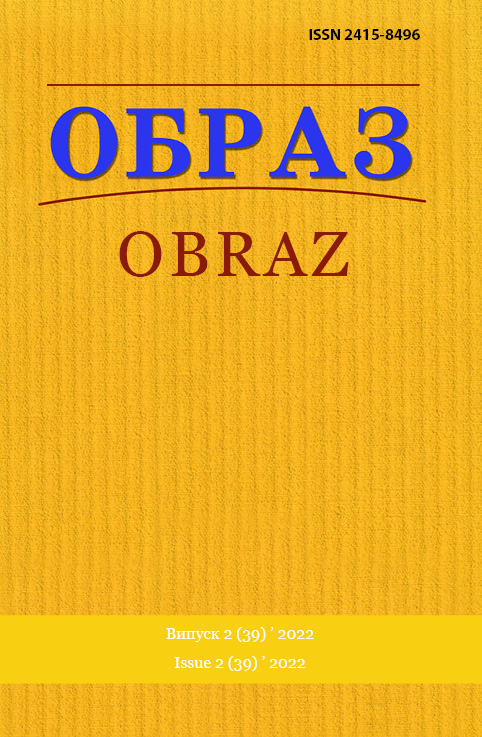Abstract
Introduction. Copywriting as a phenomenon in journalism has a special place because of its uncharacteristic nature for a specialist journalist. A copywriter’s job is different from being a journalist. This distinction is due to a number of inherent copywriting features. The article attempts to clarify and characterize these features in a scientific way.
Relevance of the study. The purpose of the article is to study the aspect of combining the features and peculiarities of journalism and advertising within copywriting, which, harmoniously intertwined in a kind of symbiosis, allow copywriters to achieve their goal in preparing custom materials. The objectives of the study identify a number of tools and techniques used in copywriting, as well as professional market conditions of the copywriter, the features of the professional profile of a specialist in a competitive environment.
Methodology. During the research, the methods of monitoring and content analysis were mostly used, thanks to which scientific sources on the chosen topic, freelance exchanges and websites of recruitment agencies and job search sites with detailed analysis of requirements for a copywriter in the professional field were developed. The method of observation, the comparative method, the descriptive method, the historical-functional method, the system method and the synthesis method were used.
Results. The article considers the peculiarities of copywriting as an applied profession, which, however, is not scientifically sound and in the field of Ukrainian higher education is not a specialty, but is an empirical unit. The aspect of combining the features and peculiarities of journalism and advertising within copywriting is analyzed, which, intertwined in a kind of symbiosis, allow copywriters to achieve their goal in the preparation of commissioned materials. It is impossible to equate copywriting with journalism itself, as well as with advertising itself, which is indicated by the purpose of the copywriter’s activity. The article also identifies a number of tools and techniques used in copywriting, including psychological, manipulative.
Сonclusions. The relevance of the study is that the skills of a copywriter in the training of future journalists is given not the last role. However, this is usually only one course, designed for six months (semester) study. This is not enough for the professional training of a specialist who plans to engage in copywriting in the future, which leads to the need for self-education and practical deepening of the scientific base on their own, outside the higher education institution.
References
1. Blynova, N., Kyrylova, O. (2018), «Copywriting as an activity of online content creation», Communications and Communicative Technologies, no. 18, pp. 13–21.
2. Blynova, N. (2019), «Latent semantic indexing (LSI) and its impact on copywriting», Communications and Communicative Technologies, no. 19, pp. 4–12, available at: http://nbuv. gov.ua/UJRN/cctech_2019_19_3.
3. Levshchanova, O., Pidmogilna, N. (2019), «Copywriter in Ukrainian media space: social aspects», Masova Komunikaciya u Globalnomu ta Nacionalnomu Vymirax [Mass Communication in Global and National Dimensions],Oles Honchar Dnipro National University, faculty of systems and means of mass communication, Dnipro, iss. 11, pp. 71–76.
4. Pekar, K., Lyzunova, O., Ishchenko, Y. (2017), «Improvement of marketing activity of the enterprise by using the services of a copywriter», Naukovyj Visnyk Xersonskogo Derzhavnogo Universytetu [Scientific Bulletin of Kherson State University], iss. 27 (2), pp. 45–48, available at: http://nbuv.gov.ua/UJRN/Nvkhdu_en_2017_27%282%29__13.
5. Rybak, D., Evseytseva, O. (2016), «The main principles of advertising text», Abstracts of the IV All-Ukrainian Scientific Conference of Young Scientists and Students «Current Issues and Prospects for the Development of Marketing Management», pp. 43–44, available at: https:// er.knutd.edu.ua/handle/123456789/4180.
6. Sibrina, G., Fedorenko, Yu., Khrul, O. (2021), «Definition of copywriting in modern realities», International Scientific and Practical Conference «The European Development Trends in Journalism, PR, Media and Communication», pp. 18–22, available at: https://doi. org/10.30525/978-9934-26-042-1-4.
7. Synyavska O.Ye. (2017), «The role of philological researches in the process of naming», International Scientific and Practical Conference «World Science», vol. 2, no. 11 (27), pp. 40–42, available at: http://rep.knlu.edu.ua/xmlui/handle/787878787/2107/.
8. Stukan, T. (2021), «Current professions of the future for youth on the labor market of Ukraine», Ekonomika ta Suspilstvo [Economy and Society], no. 24, available at: https:// economyandsociety.in.ua/index.php/journal/article/view/169.
9. Tsapok, O. (2019), «Varieties of modern copywriting», Derzhava ta Regiony. Seriya : Socialni Komunikaciyi [State and Regions. Series: Social Communications], no. 3 (39), pp. 115–120.
10. Jesslyn, Agustiningsih, G. (2021), «Application of copywriting elements in social media advertising drinking products now in creating consumer interest», Jurnal Komunikasi dan Bisnis, vol. 9, no. 1, pp. 55–67, available at: http://eprints.kwikkiangie.ac.id/2618/1/ COPYWRITING%20JURKOMBIS%20VOL%209%20NO%201%202021.pdf.
11. Zhang, Li Ming (2018), «The Innovation and Practice of the Course of Copywriting in Advertising», Advances in Social Science, Education and Humanities Research, 8th International Conference on Education, Management, Information and Management Society (EMIM 2018), vol. 250, pp. 673–676, available at: https://doi.org/10.2991/emim-18.2018.135.

This work is licensed under a Creative Commons Attribution 4.0 International License.

